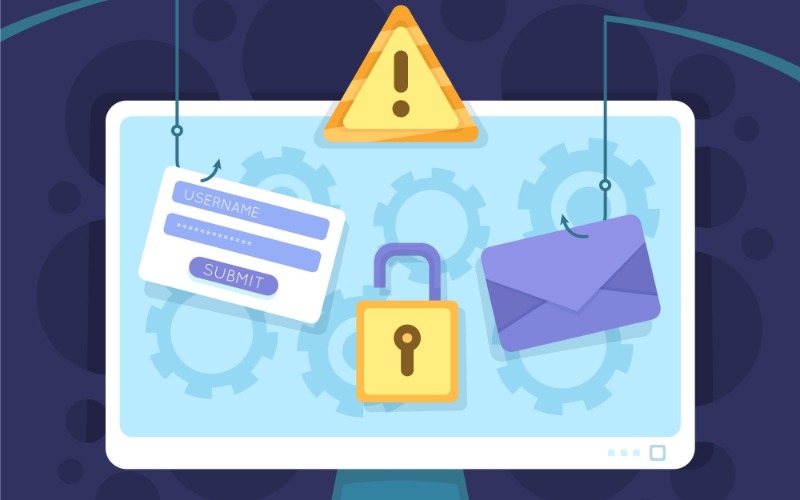Today, cyber threats are evolving in complexity and frequency. Hackers often utilize phishing emails as a method to breach security systems leading to data breaches, financial harm, and reputational damage for organizations.
To counter this danger, companies invest in training initiatives designed to educate staff on recognizing and mitigating phishing attacks. However, it is crucial to assess the effectiveness of these training programs. This article will delve into approaches businesses can employ to evaluate the outcomes of phishing email training for employees.
Importance of Training Assessment
Training schemes can bolster an organization’s security posture by empowering employees with the necessary knowledge to swiftly identify and respond to potential risks, which is crucial for cybersecurity in the digital age. Failing to assess the efficacy of these programs could result in wasted resources and time dedicated to initiatives that might not be delivering results.
Pre Training Evaluation
Before launching any phishing email training program, it is essential to establish employees’ existing knowledge levels through training assessments. These assessments aim to gauge their familiarity with phishing tactics and their capacity to spot emails effectively.
By carrying out these evaluations, companies reap two advantages. First, it enables them to customize training materials based on identified gaps in knowledge or common misunderstandings about phishing emails. Second, it establishes a standard against which improvements in employee awareness can be assessed after training sessions.
Utilizing Phishing Attacks
Simulated phishing attacks replicate real-life situations in which individuals receive emails designed to deceive them into sharing sensitive information or taking harmful actions unknowingly. These mimicked attacks are highly effective in gauging the success of an organization’s training program.
By observing how employees respond to attacks before and after training sessions, companies gain insights into whether their employee’s ability to recognize emails has improved or remained unchanged over time. Regularly conducting these assessments helps pinpoint weaknesses in training and enables interventions.
Assessing Click Rates and Reporting
Measuring the rates of emails used in simulated attacks can offer insights to organizations on the efficacy of their phishing email training. Click rates may suggest a need for training or more focused content.
Furthermore, keeping track of the number of employees reporting malicious emails is equally crucial. Reporting indicates that employees are actively participating in their training and are alert to threats.
Organizations should promote a culture that values and acknowledges reporting to reinforce desired behaviors.
Conduct Post Assessments
Post-training evaluations provide an opportunity for organizations to gather feedback from employees regarding the effectiveness of phishing email training. This feedback can be gathered through surveys or interviews, allowing employees to share any difficulties they encountered during the training and offer suggestions for improvement.
These assessments help measure employee satisfaction with the program and offer insights into areas that may need adjustments. Organizations can enhance training sessions by addressing employee concerns and preferences to better meet user expectations.
Monitor Phishing Incident Data
Relying solely on evaluations and assessments may not provide a complete picture of an organization’s security efforts. Continuously monitoring phishing incident data is essential to gain insights into the effectiveness of a phishing email training program.
By analyzing phishing attempts and incidents within an organization, stakeholders can identify patterns, trends, and vulnerabilities that may require attention or additional training. Regularly tracking this data enables organizations to keep their programs current and implement security measures.
Analyzing Metrics in Phishing Emails
To understand how effective phishing email training is, organizations can look into metrics associated with these attacks. By monitoring factors like click-through rates and response rates of real phishing emails, companies can evaluate employee actions and pinpoint areas needing more attention or enhancement. Examining these metrics yields data that complements assessment approaches, revealing patterns or weaknesses in an organization’s security setup.
Evaluating Response Time to Incidents
Another crucial aspect in gauging the success of phishing email training is assessing incident response time. This metric gauges how swiftly employees detect a phishing scam and report it appropriately. A quicker response time indicates heightened alertness and preparedness among staff members. By analyzing incident response times pre and post-training initiatives, organizations can ascertain if their programs lead to the identification and reporting of threats.
Summary
Phishing attacks remain a concern for businesses globally. Educational efforts targeting employee awareness about the risks associated with phishing emails are vital for upholding cybersecurity practices within organizations.
To ensure the success of these efforts, it’s important to assess the effectiveness of programs through both pre- and post-training evaluations, simulated phishing attempts, click rates and reports, evaluation of employees after training sessions, and consistently monitoring phishing incident data.











